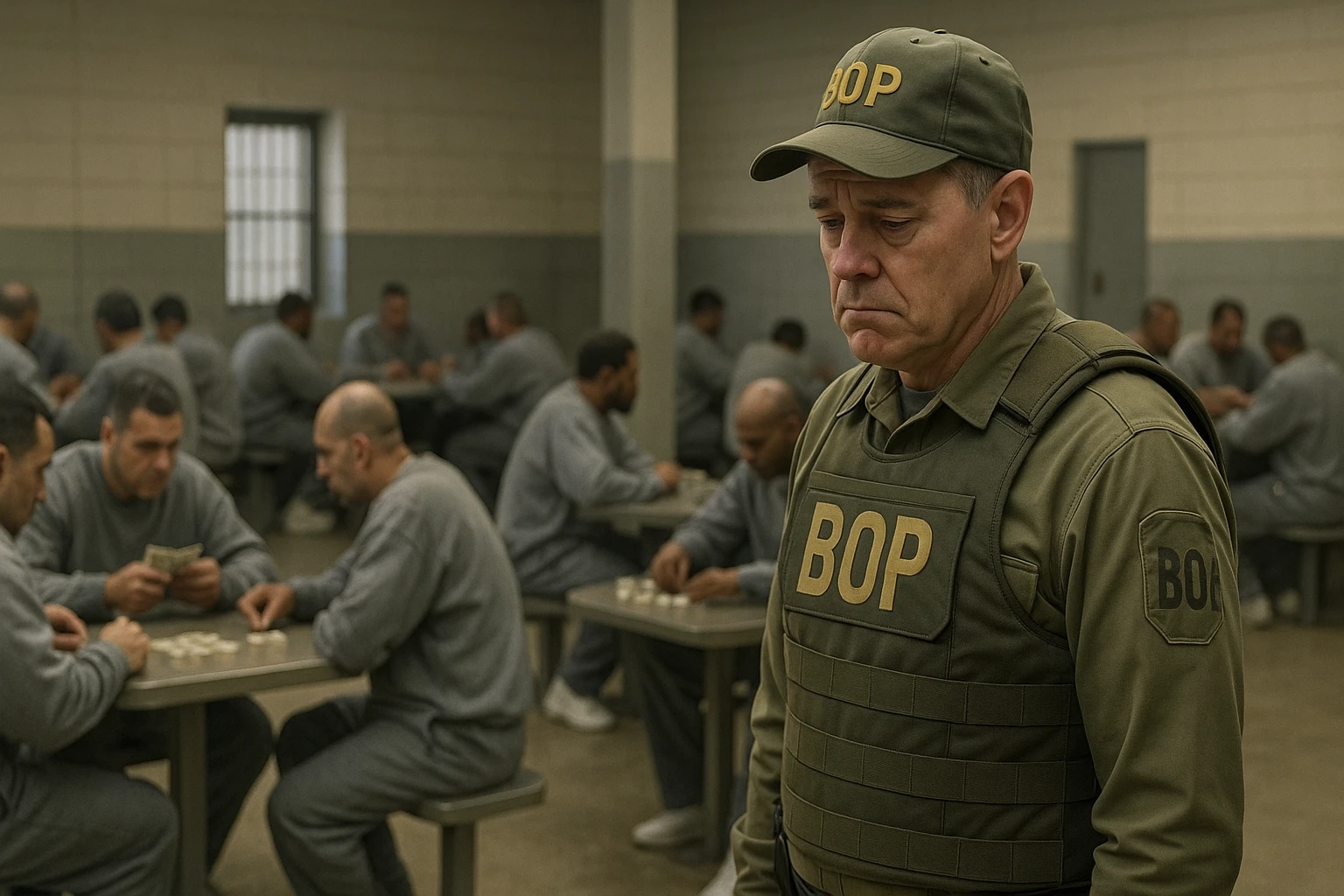The U.S. Federal Bureau of Prisons (BOP) faces an escalating crisis driven by illicit drugs infiltrating its facilities, creating a self-sustaining cycle of despair and hopelessness that impacts inmates and correctional staff alike. Historically, drugs entering prisons were smuggled primarily by corrupt staff or visitors, but today, amid a deadly fentanyl epidemic, officers themselves are becoming unintended victims, sometimes fatally, through accidental exposure to potent substances, according to multiple BOP inmate and staff reports.
Correctional officers enter the job with starting pay around $48,000 per year, as per recent Indeed.com postings. Yet, the demanding and often hazardous conditions of working in federal prisons make recruiting and retention increasingly difficult. The job description, informally ranging from "adult babysitter" to "UFC referee," now potentially includes the dangerous role of hazardous materials handler—exacerbating an already serious staffing shortage.
Many correctional officers experience profound stress from their roles. Few derive satisfaction from enforcing confinement, especially when many inmates they oversee are not violent criminals but rather individuals from impoverished backgrounds struggling with addiction or mental illness. White-collar offenders, incarcerated due to complex financial laws, further complicate the emotional toll on staff forced to witness extended sentences that exceed those in virtually all other developed nations.
Recent policy changes have compounded these issues. BOP staff report significant attrition following COVID-19 mask mandates, mandatory vaccinations, and controversial protective gear requirements, including stab vests costing over $1,500 each. Now, the agency is reportedly planning to implement mandatory full-body hazardous material suits, a measure criticized as another ineffective stopgap.
A Self-Perpetuating Crisis
The core of the problem lies in inmate morale, which deteriorates sharply due to poor prison conditions. Inmates with untreated addiction or mental health issues often revert to substance abuse as a coping mechanism, sparking violent incidents and endangering staff safety. The resultant drop in staff morale and job satisfaction increases vulnerability to corruption, making bribery and drug smuggling more common—further fueling inmate drug dependency in a vicious feedback loop.
Conditions reported by inmates from one BOP facility illustrate the severity of the crisis: routine water and air conditioning outages, substandard government-provided meals, arbitrary commissary restrictions enacted collectively by administrators without due process, frequent lockdowns from drug-related incidents, and insufficient medical care. Consequently, access to vital rehabilitation programs and classes is severely restricted, stalling efforts toward reintegration and perpetuating recidivism.
This phenomenon mirrors findings from the Rat Park Experiment, demonstrating how environmental deprivation drives substance abuse. The experiment highlights that enriched, positive environments significantly reduce drug use among populations prone to addiction.
The Human Cost and Staff Morale
Such systemic dysfunction extends beyond inmate populations, creating an unsafe, demoralizing working environment for correctional staff. Officers frequently encounter threats to their physical safety and psychological well-being, fueling high turnover and recruitment difficulties, worsening institutional stability and operational efficiency.
Finding a Balanced Solution
Should we reward inmates for bad behavior by giving them amenities and entertainment? No, of course not. But we can't deny the fact that if you gave every inmate an Xbox, junk food, vapes, air conditioning, hot showers, and microwaves, the drug use and violence would likely drop to nearly zero overnight. Most U.S. state prisons have proven this repeatedly. The problem is that the federal system continues to rely solely on punishment rather than engagement and rehabilitation. The question is: where is the happy medium?
Fortunately, it already exists. The BOP has clear policies regarding air conditioning, hot water, food quality, and commissary access. Inmates can purchase Android tablets to load with games and movies. The infrastructure for a safer, more humane prison environment is already in place. What’s missing is consistent and competent implementation at the facility level. Inmate and staff reports describe a pattern of mismanagement, where leadership has become disengaged and quick to impose lockdowns or collective punishments as a way to reduce their own workload.
Proposed Solutions
- Enforce existing BOP regulations regarding inmate living standards (air conditioning, hot water, food quality, commissary access).
- End collective punishment practices; target disciplinary actions specifically at offending inmates following due process.
- Enhance inmate access to mental health services and drug rehabilitation programs.
- Prioritize hiring staff focused on inmate rehabilitation and welfare rather than purely punitive measures.
- Implement accountability measures for administrative staff to ensure consistent policy adherence and reduce arbitrary punitive practices.
- Regularly evaluate prison environments and staff morale through transparent oversight mechanisms.
Addressing these systemic issues holistically can break the destructive cycle, improving conditions for both inmates and correctional officers and ultimately benefiting society as a whole.
